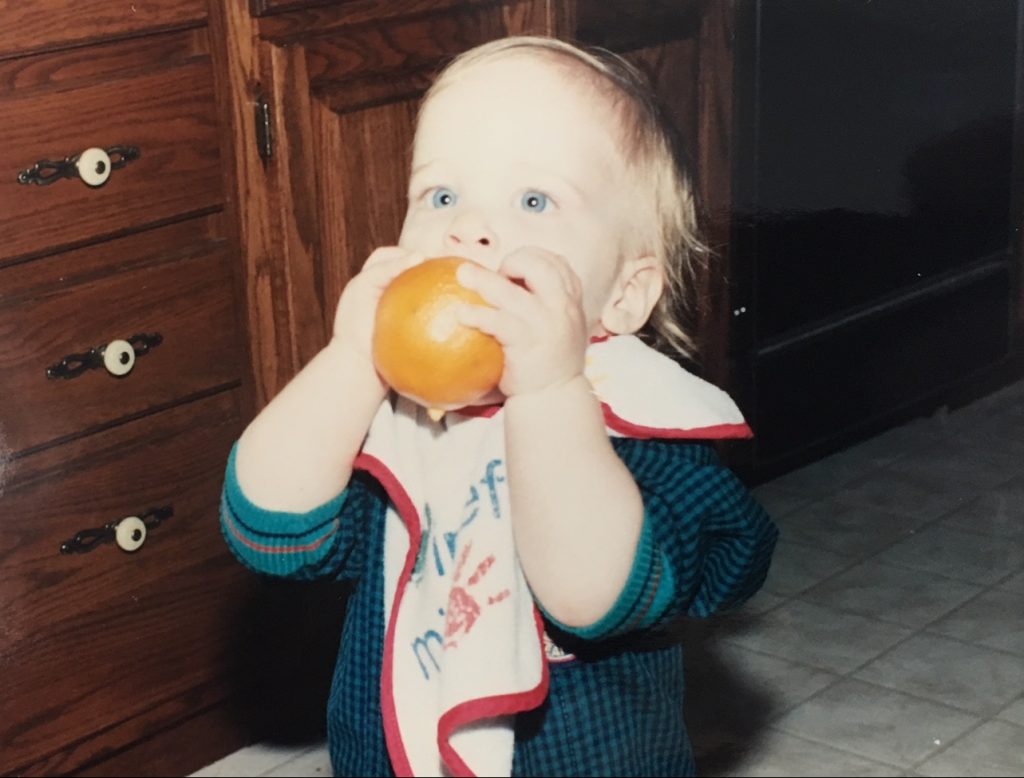
Bane Valentine is an autodidactic, multi-disciplinary artist and teacher based in Woodford County, Kentucky. His primary areas of artistic concentration are short-form poetry, brush calligraphy, and woodblock carving. With ten years of professional teaching experience he serves as English Program Director for GlobalStep Language Services — a small Japanese-owned business based in Lexington, Kentucky [RESUME]. In addition to teaching and art, Bane centers his life around daily meditation practices and enjoys music, carpentry, and gardening as hobbies. He is a godfather and uncle of twelve. A third person account of his intriguing early life experiences can be perused below.
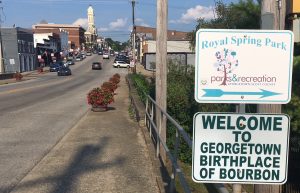
Aaron Bane Valentine was born on (Columbus Day) October 12, 1987 to working class parents in central Kentucky. Bane is a family name taken from his maternal great grandfather, Henry Bane (“Bean”) Compton (the youngest of seven children, as are Bane and his mother the youngest of five and six, respectively). Ginger Valentine, the final of six girls, was born, auspiciously, on Valentine’s Day, and his father, Rick, on the 25th of December. Bane is the youngest grandchild of twenty on his mother’s side and the oldest of four on his father’s. He was raised at 417 West Main Street at the apex of historic downtown Georgetown — a stone’s roll from Royal Spring (the birthplace of Kentucky Bourbon).
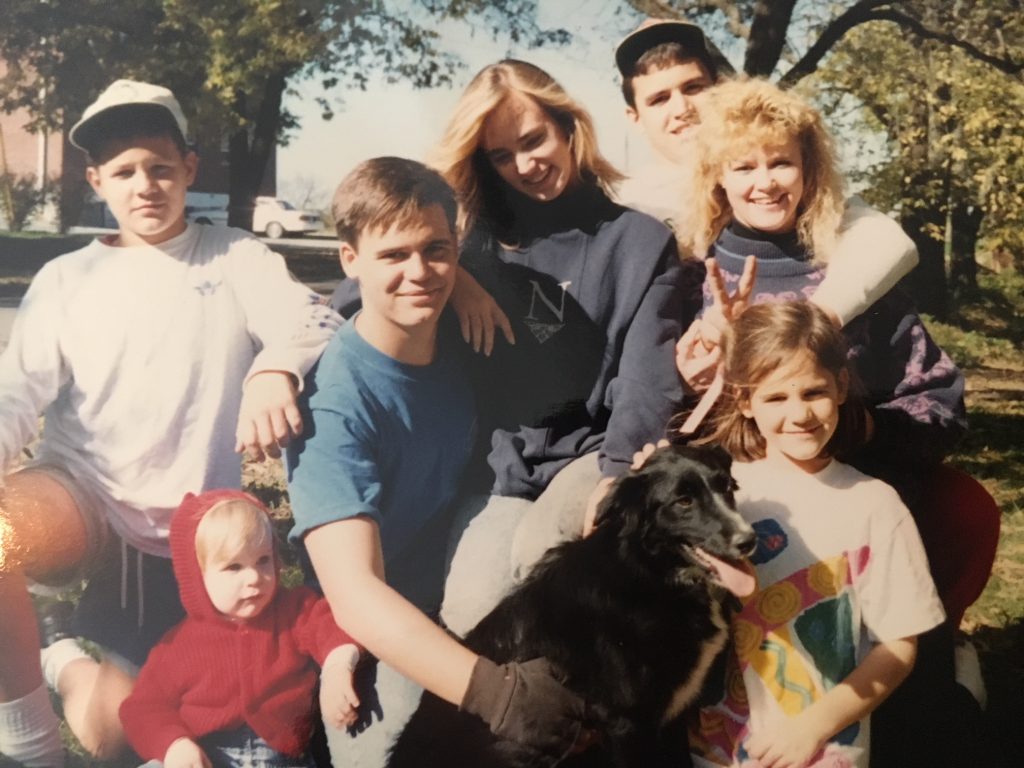
417 West Main is immediately adjacent to what was the abandoned John Graves Ford Memorial Hospital [pictured above (top left) and below]. Prior to its demolition in 2007, Bane spent the entirety of his adolescence living under the shadow of “The Old Hospital” — his bedroom window directly facing the eerie remains of the structure where his mother had been born [CREEPY LINK↗]. A frequent witness to a variety of paranormal phenomena, the intuitive young child often experienced intense levels of psychic fear and always slept facing his sister’s room; never turning (West) toward the dilapidated, macabre infirmary looming just next door, (North) toward his closet, concealing an eldritch nexus inside the attic, nor, across the hall, (East) toward the most frightening room of the house. Fortunately, despite being confronted by an array of bewildering chimeras, Bane was always able to rely on the providential light of love — that emanated (South) from the rooms of his family —to shield him from a myriad of spectral forces. Such a profound reliance on tight knit familial love, the constant companionship of his beloved Australian shepherd, ample exposure to a multitude of diverse older influences, and endless hours spent exploring Kentucky’s beautiful natural settings (on foot and horseback) provided pivotal counterweights to the phantasmagoria he encountered each night.
The intensity of Bane’s early life experience was further compounded by a variety of health issues (spawned from serious undiagnosed food allergies) and was highlighted by a unique, hereditary form of somnabulism. An anomalous condition that can be described, in short, as sleep walking, with perfect motor control, during active REM sleep, wherein the content of dreams is experienced as a visual hallucination woven on top of sense reality. If physically awoken during such an episode, what was being experienced as a tree — while dreaming — might dissolve back into the bedside dresser (for example). It is a process most notable for the extremity of its discombobulating effects — if awakened — and the painful difficulty of correctly orienting one’s self during transitional phases. From leaps across the room and opening a third story window to impenetrable force fields and sitting up in bed chatting/laughing with invisible interlocutors, it is a phenomenon that has taken on a multiplicity of forms throughout his life and continues to spawn perplexing and imaginative mythopoetic visions.

Shortly after Bane’s family moved out of the house on Main Street they lost both Bane’s maternal grandfather and his mother’s oldest sister in near succession. Bane had been extremely close to both and is blessed to have spent so much time with them. After Patti Anne’s funeral Bane and his mother traveled to visit another of his aunts in Sarasota, Florida. On the seventh day — after his aunt’s passing— a bird greeted Bane and his mother, who were swimming alone at an isolated neighborhood pool. For some twenty minutes the bird climbed on them, allowed them to stroke her feather’s softly, and jumped down and back up into their laps repeatedly. Two days later, Bane’s mother, while reading a book that his aunt had left in Florida on her final visit, happened upon a chapter chronicling stories of deceased family members visiting their loved one’s as animals, with the example given, in the book, being that of birds. The inside of the back cover signed: Patti Anne.
In April of 1994 Bane’s family visited the historic Boone’s Tavern in Berea, Kentucky. As the family was waiting to be seated, the Dalia Lama (complete with an entourage of monks) strolled uncannily into the restaurant lobby. Not only did the family spend several awkward minutes in the lobby gawking at His Holiness, they just so happened to exit the restaurant simultaneously. Such a random and completely unexpected occurrence — in a small town in rural Kentucky — is that much stranger given that it is the only time in Bane’s life that he has eaten at the restaurant, and one of only two recorded trips↗ that Tenzin Gyatso has made to the Bluegrass State.
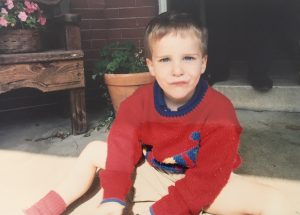
Two years prior, Bane played his entire first season of tee ball missing all seven of his front teeth after his sister kicked him over the couch — during a failed attempt to capture the remote control by force — face planting into the corner of his grandparent’s coffee table. Fortunately, Bane is extremely blessed to have wonderful parents. Despite notable financial struggles the hardworking duo managed to scrape together funding for a private elementary school education. In fifth grade, on the final day of his elementary school life, after having made the rocky transition to local public school (where he would spend the remainder of his primary and secondary education) Bane found himself faced with three teachers and the janitor, alone on the dodge ball field — after some fifty of his peers had been eliminated by the Garth Elementary School staff. Despite their best shots, the teachers and janitor were unable to hit the smallest kid in class. After collecting all of the balls, Bane managed to picked them off, one by one, winning the “Field Day” game for his graduating class — a pivotal moment for a child whose pediatrician would statistically estimate his future height at eight inches less than it ultimately became.
Later that summer, while playing a round of golf with a friend who lived at the local course, Bane encountered a curious young girl selling golf balls — somewhat dangerously — out of a box from what appeared to be the outer edge of her backyard. On the next hole, Bane teed up the first of the three balls he purchased and drained a miraculous (single shot) hole-in-one, witnessed by his best friend — who just so happened to live directly behind the putting green of the same hole. By the end of that 6th grade year Bane had already tested at a twelfth grade reading level, meticulously combed through the vast array of religious information available on Encarta 97, fallen in love with Joseph Campbell’s The Power of Myth, and e-mailed the nearby Furnace Mountain Zen Retreat Center informing them of his wish to ordain as a novice monastic. Some five years later he found himself on track to becoming a physician after taking all of the medical classes available at his high school, winning first place prizes in regional competitions, and attending the National Youth Leadership Conference of Medicine at Emory University. On the final day of the conference, an elderly African American surgeon boldly stated, to the entire assembly of would be future medical professionals, “if you’re here because you truly want to help people, don’t become a doctor. Become a monk…”
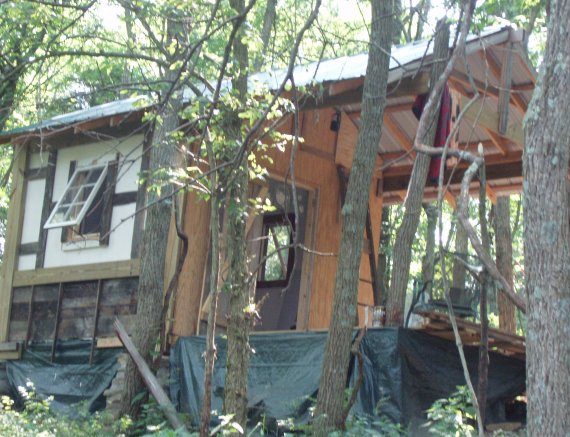
Needless to say, the impressionable youth took the declarative to heart. At sixteen, after years of informal meditation attempts and lots of reading, Bane followed through with the retreat center’s original suggestion and attended a traditional four day retreat (sesshin), accompanied by his eldest brother. During his second koan interview with the abbot (dokusan), on the third day of retreat, Zen Master Dae Gak sparked a direct experience of Śūnyatā, and, after boisterously laughing for an extended period, heralded it as “our first enlightening experience.” The staggering depth and range of that singular breakthrough is perhaps most evident in the hundreds of haiku-like poems he composed in the fifteen years that followed. In the lingering postmodern milieu, Bane continues to regard short-form poetry as a unique avenue for navigating multi-faceted and paradoxical dimensions of truth in ways that are palatable to the brevity required of hyper-technological information culture, yet robust enough to meaningfully grapple with the complexity and disconcerting ambiguities of life in 2020 [WORKS↗].
12/11/2020 © All Rights Reserved